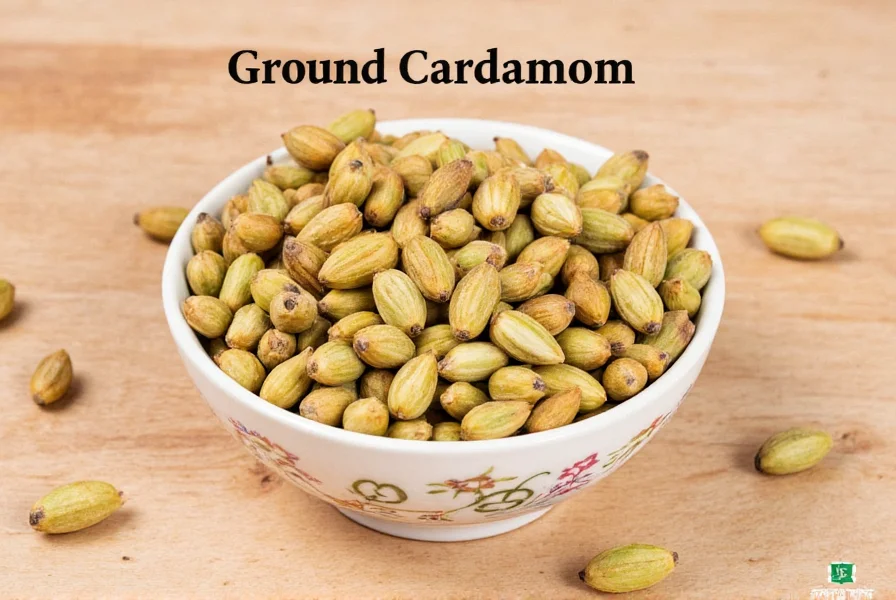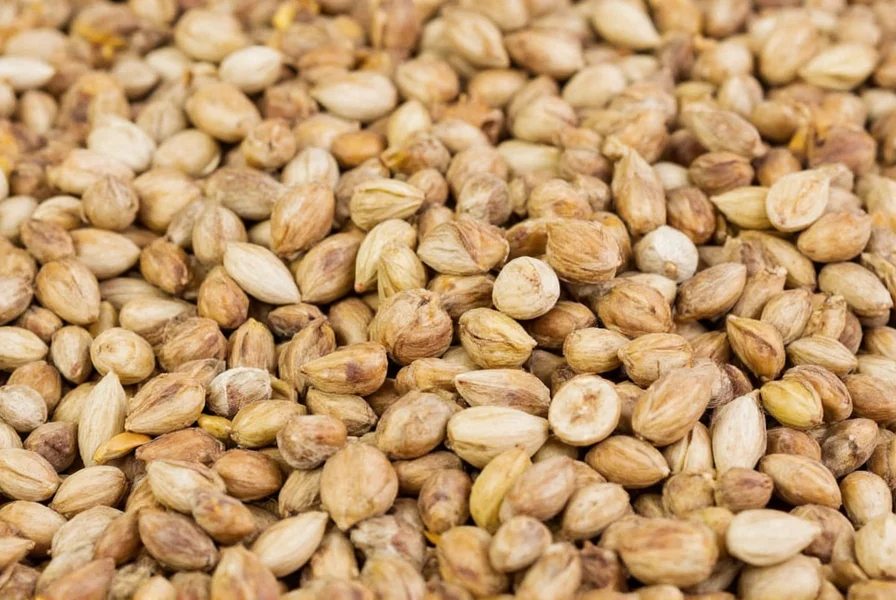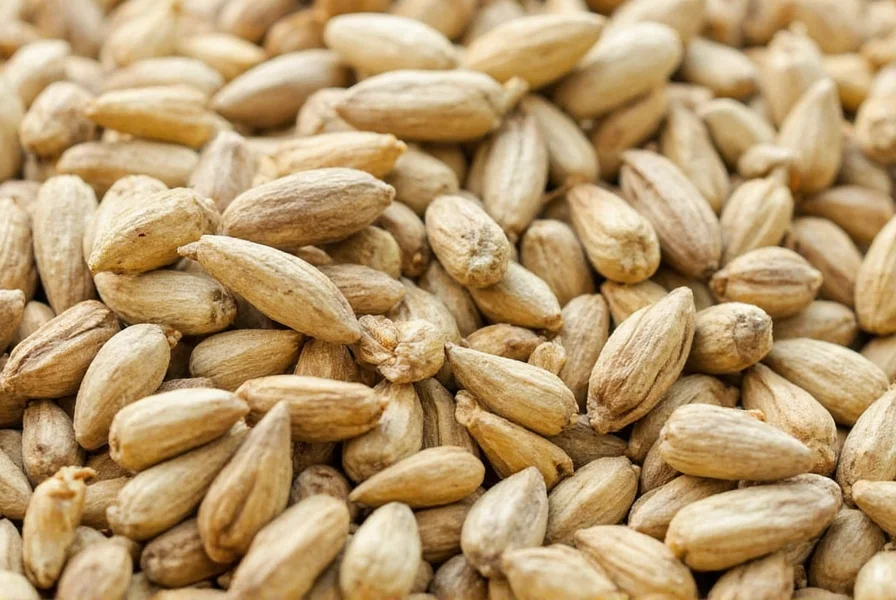Cardamom ranks as the world's third most expensive spice after saffron and vanilla, prized for its complex flavor profile that enhances both sweet and savory dishes. When you choose ground cardamom over whole pods, you're trading some aromatic intensity for kitchen convenience—a practical compromise that works well in many recipes but requires understanding its limitations.
Ground Cardamom vs Whole Cardamom Pods: Key Differences
The fundamental difference between ground cardamom and whole cardamom pods lies in flavor intensity and shelf stability. Whole green cardamom pods contain seeds protected by their husks, preserving volatile oils that give cardamom its distinctive aroma. Once ground, these oils begin evaporating immediately, resulting in gradual flavor degradation.
| Characteristic | Ground Cardamom | Whole Cardamom Pods |
|---|---|---|
| Flavor Intensity | Moderate (diminishes over time) | Strong and complex (when freshly ground) |
| Shelf Life | 6-12 months | 2-4 years |
| Best Used For | Baking, spice blends, quick recipes | Savory dishes, infusions, special occasions |
| Flavor Control | Less precise | More precise (adjust to taste) |
| Preparation Time | Instant | Requires grinding (1-2 minutes) |
Professional chefs often keep both forms in their pantries. For everyday cooking where convenience matters, ground cardamom works perfectly well. When preparing special dishes where cardamom plays a starring role—like Swedish cardamom buns or Indian biryani—many prefer grinding whole pods just before use to maximize flavor impact.
Optimal Culinary Applications for Ground Cardamom
Understanding where ground cardamom shines helps maximize its potential in your kitchen. Unlike whole pods which work best in slow-cooked dishes where they can be removed before serving, ground cardamom integrates seamlessly into finished dishes.
Baking with Ground Cardamom
Ground cardamom excels in baked goods where even distribution matters. Scandinavian baking traditions rely heavily on this spice—Swedish kardemummabullar (cardamom buns) and Finnish pulla both feature ground cardamom as a signature ingredient. When baking, use 1/8 to 1/4 teaspoon of ground cardamom per cup of flour for subtle flavor, or up to 1/2 teaspoon for more pronounced cardamom notes.
For optimal results in baking applications, combine ground cardamom with complementary spices like cinnamon, nutmeg, and cloves. This creates the warming spice profile characteristic of Nordic holiday baking. When making cardamom coffee cake or muffins, fold the spice into dry ingredients thoroughly to prevent bitter pockets of concentrated flavor.

Ground Cardamom in Beverages
Cardamom tea and coffee preparations benefit from ground cardamom's immediate solubility. In Middle Eastern coffee traditions, a pinch of ground cardamom added directly to coffee grounds creates aromatic brews without requiring straining. For chai tea blends, ground cardamom combines well with ginger, black pepper, and cinnamon.
When preparing cardamom-infused beverages, remember that ground cardamom requires shorter steeping times than whole pods—typically just 3-5 minutes. Longer steeping can extract bitter compounds from the fine particles. For cold brew applications, use slightly less ground cardamom than you would for hot preparations, as cold extraction is less efficient.
Savory Dishes Featuring Ground Cardamom
While whole pods dominate in traditional Indian and Middle Eastern savory cooking, ground cardamom works well in spice blends and quick-cooking dishes. Incorporate it into:
- Rubbed onto meats before roasting (especially lamb and chicken)
- Curry powders and garam masala blends
- Rice dishes where even distribution matters
- Marinades for quick-cooking proteins
For the best results with ground cardamom in savory applications, bloom the spice in oil before adding other ingredients. Heat 1 teaspoon of oil with 1/4 teaspoon ground cardamom for 30-60 seconds until fragrant, then proceed with your recipe. This technique maximizes flavor extraction from the ground spice.
Maximizing Flavor: Storage Guidelines for Ground Cardamom
Proper storage represents the most critical factor in maintaining ground cardamom's quality. Unlike whole pods which remain potent for years when stored properly, ground cardamom begins losing volatile compounds immediately after grinding.
Follow these storage guidelines to extend shelf life:
- Store in an airtight container away from light and heat
- Keep away from strong-smelling spices that might transfer odors
- Refrigeration extends shelf life by 3-6 months (ensure container is completely sealed)
- Freezing preserves potency for up to 18 months (use vacuum-sealed containers)
Test your ground cardamom's freshness by rubbing a small amount between your fingers and smelling. Fresh product should release a strong, complex aroma with citrus and floral notes. If the scent is faint or musty, it's time to replace your supply. For optimal flavor in recipes requiring ground cardamom, purchase small quantities and replace every 6-8 months.
Substitution Strategies When Ground Cardamom Isn't Available
Running out of ground cardamom doesn't have to ruin your recipe. Understanding proper substitutions helps maintain dish integrity when this spice is unavailable.
The most accurate substitution uses whole cardamom pods. For every 1/4 teaspoon of ground cardamom required:
- Use 2-3 green cardamom pods, crushed to release seeds
- Grind seeds with 1/4 teaspoon sugar (helps prevent clumping)
When neither form is available, consider these alternatives based on your recipe type:
- For baking: Combine equal parts cinnamon and nutmeg with a pinch of cloves
- For savory dishes: Use allspice or a blend of coriander and cumin
- For beverages: Try a combination of ginger and orange zest
Remember that substitutions never perfectly replicate cardamom's unique profile. Adjust quantities gradually and taste as you go. In Scandinavian baking where cardamom is essential, substitutions work less effectively than in spice blends where it plays a supporting role.

Avoiding Common Ground Cardamom Mistakes
Even experienced cooks sometimes misuse ground cardamom. Recognizing these common pitfalls helps maximize this spice's potential:
- Overuse: Cardamom's strong flavor can dominate dishes. Start with 1/8 teaspoon per serving and adjust upward.
- Using stale product: Old ground cardamom lacks complexity and may taste bitter. Check freshness before using in important recipes.
- Incorrect substitutions: Using equal amounts of other spices without considering flavor intensity differences.
- Adding too late: In baking, add ground cardamom to dry ingredients; in cooking, bloom in oil early in the process.
- Mixing with incompatible flavors: Cardamom clashes with strong mint flavors and certain dairy preparations.
When incorporating ground cardamom into recipes, always consider its role in the flavor profile. In Scandinavian baking, it should be noticeable but not overwhelming. In Indian cuisine, it typically plays a supporting role to other spices. Understanding these cultural contexts helps use ground cardamom appropriately across different culinary traditions.
Understanding Cardamom Varieties for Ground Spice
Not all cardamom is created equal. The two primary varieties used for ground spice differ significantly:
- Green Cardamom (Elettaria cardamomum): The most common variety worldwide, featuring bright, citrusy notes with floral undertones. Ideal for both sweet and savory applications.
- Black Cardamom (Amomum subulatum): Larger, smokier pods typically used in savory Indian dishes. Not commonly found as pre-ground spice due to its strong, camphorous notes.
When purchasing ground cardamom, check whether it's made from green or black varieties, as they're not interchangeable. Most commercial ground cardamom uses green cardamom, but specialty stores may offer black cardamom powder for specific culinary applications. For authentic Indian cooking, ensure you're using the correct variety as specified in recipes.
Frequently Asked Questions
How much ground cardamom equals one cardamom pod?
One green cardamom pod yields approximately 1/8 teaspoon of ground cardamom. For recipes specifying whole pods, use 1/8 teaspoon of ground cardamom per pod called for. Keep in mind that freshly ground from pods provides more intense flavor than pre-ground spice.
Does ground cardamom go bad? How can I tell?
Yes, ground cardamom loses potency over time. It typically remains flavorful for 6-12 months when stored properly. To test freshness, rub a small amount between your fingers—if the aroma is faint, musty, or lacks complexity, it's time to replace. Fresh ground cardamom should have a strong citrusy, floral scent with subtle eucalyptus notes.
Can I substitute ground cardamom for whole pods in recipes?
Yes, but with adjustments. Use 1/8 teaspoon of ground cardamom per pod called for in the recipe. Remember that ground cardamom has less intense flavor than freshly ground from pods, so you may need to increase the amount slightly. For best results in dishes where cardamom is a featured flavor, freshly grinding whole pods is recommended.
What are the best storage methods for ground cardamom?
Store ground cardamom in an airtight container away from light, heat, and moisture. For maximum shelf life, keep it in a cool, dark cupboard for 6-8 months, refrigerate for 9-12 months, or freeze for up to 18 months. Always use clean, dry utensils when measuring to prevent moisture contamination, which accelerates flavor loss.
What spices pair well with ground cardamom?
Ground cardamom pairs beautifully with cinnamon, nutmeg, cloves, and allspice in sweet applications. For savory dishes, it complements cumin, coriander, and ginger. In Scandinavian baking, it's often combined with butter and sugar. In Middle Eastern cuisine, it works well with rose water and orange blossom. Avoid pairing with strong mint flavors, which can create an unpleasant medicinal taste.











 浙公网安备
33010002000092号
浙公网安备
33010002000092号 浙B2-20120091-4
浙B2-20120091-4